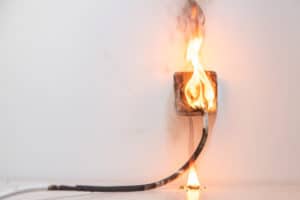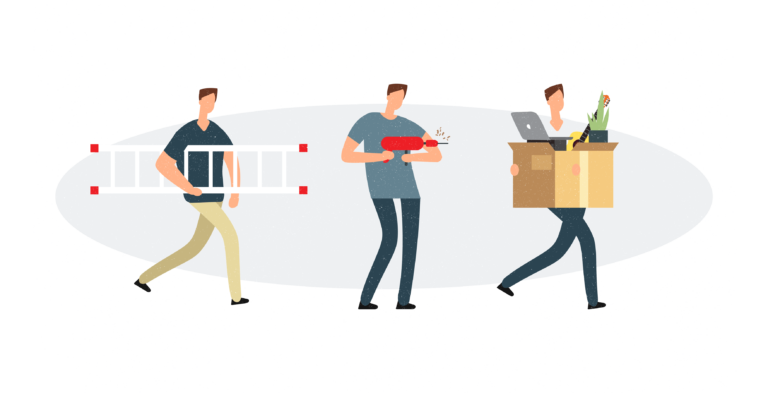There is nothing more precious than holding your sweet baby in your arms. Becoming a parent changes you. It gives you a whole new perspective on life and priorities. You want so much to take the best possible care of your little one.
With so many families being home 24/7 now during the quarantine, safety at home is more important than ever.
Sadly, accidents in the home result in millions of injuries and thousands of deaths each year in the United States. These kinds of statistics break our hearts!
Unintentional injuries—such as those caused by burns, drowning, falls, poisoning and road traffic—are the leading cause of morbidity and mortality among children in the United States.
Each year, among those 0 to 19 years of age, more than 12,000 people die from unintentional injuries and more than 9.2 million are treated in emergency departments for nonfatal injuries.
CDC Child Injury Report
No need to panic!
Numbers like these may make you want to wrap your child in bubble wrap and strap them to a chair for life to try to prevent anything bad from ever happening.
It can be a bit overwhelming to think about all the things you need to do to “babyproof” or “childproof” your home. And your baby’s grandparents’ homes, too. But it is more than worth it. And you can do it!
Although you can’t prevent every possible injury, you can help dramatically reduce the risk of injuries for your children by putting some important safety measures in place in your home.
Our best child safety recommendations for the home
19 child safety tips:
- Install child safety gates at the top and bottom of stairs and to keep children away from the kitchen, bathrooms, or other dangerous areas.
- Install child safety locks or proper door locks on any door that could allow a child to access something dangerous.
- Install child safety cabinet locks or child safety latches.
- Install a dutch door or half door for certain rooms if you prefer that to a baby safety gate.
- Install child safety locks on the front door and entry doors.
- Install child safety window locks.
- Install child safety window guards or window bars.
- Install a safety rail on a child’s bed.
- Install outlet covers.
- Anchor dressers to the wall or tether dressers to the wall.
- Install smoke alarms in appropriate locations.
- Install carbon monoxide detectors in
- Keep window blind cords safe and out of the way by wrapping and securing them to a cord cleat.
- Install a child safety lock on toilet seats.
- Keep small items that could be choking hazards, medications, candy, food, and anything toxic or poisonous in drawers or cabinets that are locked or out of reach.
- Store lighters, matches, knives, guns, and scissors in a locked cabinet.
- Install a fence with a locking gate around bodies of water like swimming pools, lakes, and ponds.
- Don’t keep electrical equipment near a bathtub or sink.
- Cover hot tubs when not in use and always empty baby pools after use.
Need help installing safety devices?
Even if you don’t have time or you don’t have the skills, you still need to childproof your home. What can you do?
The good news is, a handyman near you can help! We are considered to be an essential service, so contact a handyman near you and ask if they are following the current OSHA and CDC guidelines to help keep customers safe. If they are, you can buy the products you prefer and hire the handyman service to do the installation for you. Of course, only choose a handyman business you trust!
Then you can save your precious time and know you will have everything installed properly so that your child can be as safe as possible.
A handyman company may even be able to provide some recommendations as to the products they recommend if you ask.
CDC Tips for Caring for Children
Take steps to protect children and others from getting sick
Help stop the spread of COVID-19 by doing the same things everyone should do to stay healthy. Teach your children to do the same.
- Clean hands often using soap and water or alcohol-based hand sanitizer.
- Avoid people who are sick (coughing and sneezing).
- Clean and disinfect high-touch surfaces daily in household common areas (like tables, hard-backed chairs, doorknobs, light switches, remotes, handles, desks, toilets, and sinks).
- Launder items including washable plush toys as needed. Follow the manufacturer’s instructions. If possible, launder items using the warmest appropriate water setting and dry items completely. Dirty laundry from an ill person can be washed with other people’s items.
You can find additional information on preventing COVID-19 at How to Protect Yourself and at Preventing COVID-19 Spread in Communities. Additional information on how COVID-19 is spread is available at How COVID-19 Spreads.
For More Safety Tips, Please Check Out These Resources:
CDC Caring for Children During the COVID-19 Pandemic
McGruff Safe Kit – Top 10 Home Safety Tips for Kids
CDC Tips for Raising Safe and Healthy Kids










